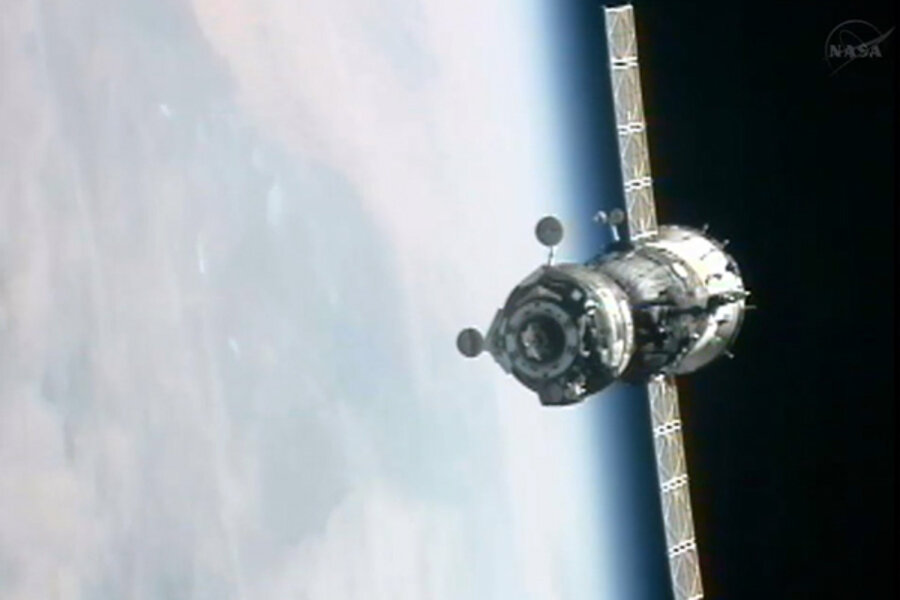Three new residents arrive at International Space Station
Loading...
A Russian Soyuz space capsule linked up with the International Space Station Thursday (Oct. 25) to deliver three new residents to the orbiting laboratory.
The Soyuz TMA-06M spacecraft docked at the space station's rooftop Poisk module at 8:29 a.m. EDT (1229 GMT) after a two-day orbital chase. Riding on the Soyuz were American astronaut Kevin Ford of NASA and Russian cosmonauts Oleg Novitskiy and Evgeny Tarelkin, who are beginning a five-month mission to the space station.
"We can see you, everything looks fine," Russian cosmonaut Yuri Malenchenko, who was already onboard the station, told the approaching crew before the two spacecraft docked about 230 miles (370 km) over southern Ukraine.
The Soyuz crew will float inside the space station at about 11:15 a.m. EDT (1415 GMT) during a cosmic welcome ceremony.You can watch the Soyuz crew's welcome ceremony live on SPACE.com here via a NASA TV feed. The NASA broadcast will begin at 10:45 a.m. EDT (1445 GMT).
"We’ll stay until March," Ford said in a NASA interview before launch. "We’ve got some space station maintenance activities planned, some kind of periodic maintenance that we’ve trained for, but really the emphasis will be on getting the science rolling and getting as much utilization out of the flight as we can."
Ford, Novitskiy and Tarelkin launched into space on Tuesday (Oct. 23) atop a Soyuz rocket that blasted off from the Central Asian spaceport of Baikonur Cosmodrome in Kazakhstan. They are the second half of the space station's six-person Expedition 33 crew, which is commanded by NASA astronaut Sunita Williams. Malenchenko and Japanese astronaut Akihiko Hoshide round out the crew. [Launch Photos: Soyuz Rocket Blasts Off With Station Crew]
The Soyuz spacecraft is bringing some fishy friends to the space station in addition to its human crew. The spacecraft is ferrying 32 small medaka fish to the space station so they can be placed inside a tank, called the Aquatic Habitat, for an experiment to study how fish adapt to weightlessness.
Thursday's Soyuz docking at the space station kicks off a flurry of arrivals and departures at the International Space Station.
A robotic Dragon space capsule built by the private spaceflight company SpaceX will depart the space station on Sunday (Oct. 28) and splash down in the Pacific Ocean off the coast of Southern California. The Dragon capsule will return nearly 2,000 pounds (907 kilograms) of science experiment hardware and other gear back to Earth.
On Wednesday (Oct. 31), an unmanned Russian Progress spacecraft will launch toward the space station and arrive six hours later to make a Halloween delivery of food, equipment and other Halloween treats.
One day later, on Thursday (Nov. 1), Williams and Hoshide will don bulky spacesuits and float outside the space station on a spacewalk to fix an ammonia leak in the orbiting lab's cooling system.
Williams, Hoshide and Malenchenko are in the final weeks of their mission to the space station, and will return to Earth Nov. 12. At that time, Ford will take command of the space station crew to begin the Expedition 34 mission.
You can follow SPACE.com Managing Editor Tariq Malik on Twitter @tariqjmalik and SPACE.com on Twitter @Spacedotcom. We're also on Facebook & Google+.







